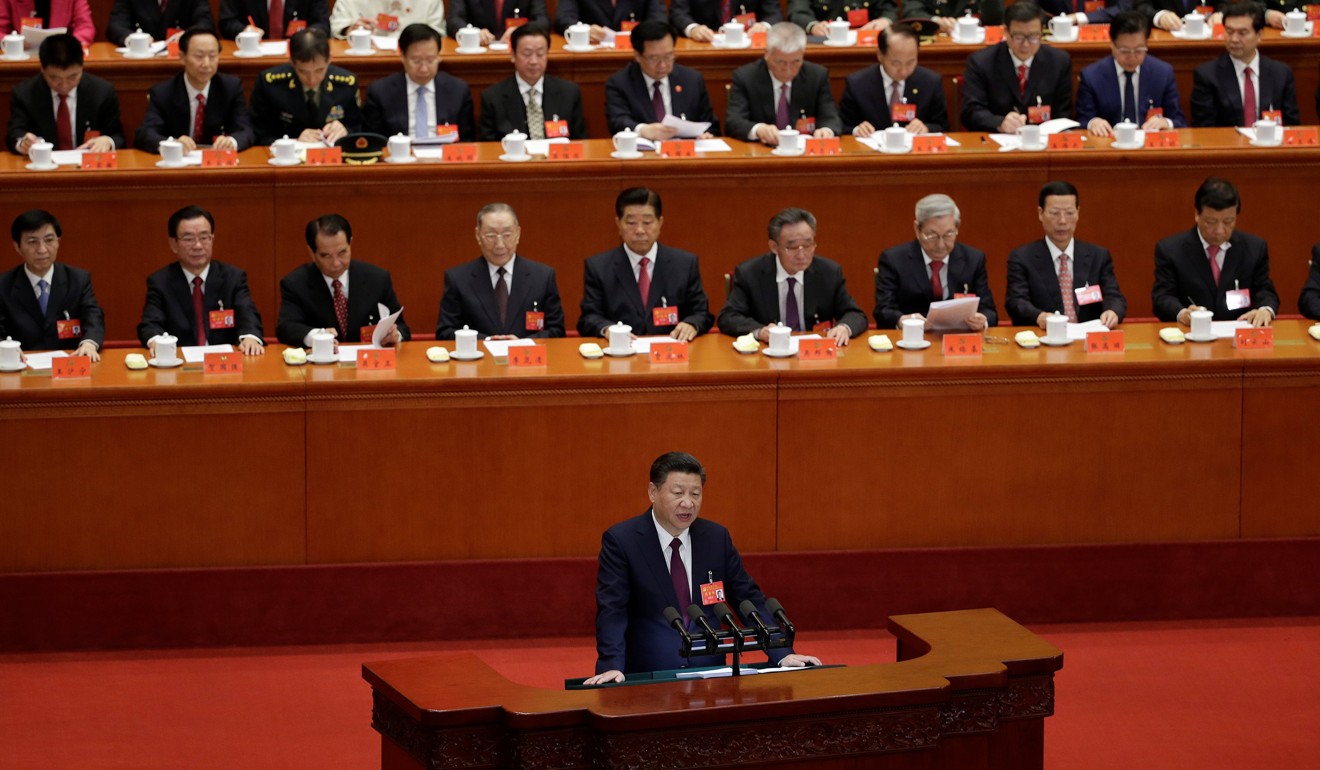
Will the US remain the sole global economic superpower until 2035?
- The Development Research Centre of the State Council paints a relatively low profile role for China over the next two decades due to current economic slowdown
- Reports released ahead of the trade talks between China’s Vice-Premier Liu He and a US delegation led by Robert Lighthizer and Steven Mnuchin in Beijing this week
The United States will remain the world’s only global economic superpower until 2035 even though China’s role in the world economic landscape will become more important, according to Beijing’s latest predictions, in an apparent toning down of the mainland’s public ambitions for its future role in global economy.
While the report by the Development Research Centre of the State Council (DRC) does not directly address the rivalry between China and US, it does attempt to project a relatively low profile role for China over the next two decades.
It is often assumed that China will overtake the US as the world’s number one economy, or at least gain the same prestige as a global economic superpower, within the next decade.
Standard Chartered Bank predicted in January that China would overtake the US as the world’s largest economy as soon as 2020.
The latest humbler predictions from the state-owned think tank, a summary of which was published in the official Economic Daily newspaper on Tuesday, came at a time when Beijing’s global push has met growing resistance and its growth prospects have been darkened by rising hostilities with Washington.

According to the DRC report, the US economy will remain dominant until 2035 – the same year singled out by Chinese President Xi Jinping at the 19th National Congress of the Communist Party of China in October 2017 as the year when China would become a “basically modernised country”.
While Xi’s speech referencing the year 2035 did not include a specific gross domestic product target, it is thought that this is the point at which he expected the size of the Chinese economy to have caught, and likely surpassed, that of the US, according to Zhong Wei, a professor with Beijing Normal University.
The DRC researchers were headed by Long Guoqiang, who was an aide to Vice-Premier Liu He during He’s tenure at the think tank and is currently an important government adviser in handling external economic ties.
The DRC noted that while China’s economic status will rise over the next two decades, it will remain behind the US.
“The US will remain as the [sole] global [economic] superpower,” they wrote.
“In the short term, US consumption will continue to prosper and be a key factor reinforcing economic growth,” the report continued, citing the 2 per cent long-term potential growth rate projected by the US Federal Reserve.

The European Union and Japan will become weaker, the report predicted, with Japan dropping from the third to the fifth largest economy by 2035, and Germany becoming the only European nation in the top seven.
Even though the US will remain the top economy, the “global economic growth gravity will shift from America and Europe to Asia” by 2035, it said.
China’s national gross domestic product grew to US$13.1 trillion last year, around two-thirds the size of the US economy.
The Chinese growth rate slowed to a 28-year low of 6.6 per cent last year amid the headwinds of the government’s campaign to reduce debt and risky lending and rising external trade tensions.
The growth rate could slow further if US President Donald Trump escalates the current trade war, having threatened to increase tariff rates when the 90-day trade truce expires on March 1 unless a trade deal has been reached.
Beijing has softened its stance from last year when it opted for tit-for-tat retaliation against Trump’s tariff increases.
In recent weeks, Chinese officials have openly promised to buy more American goods, open up its market, enhance intellectual property protection and carry out structural reforms.
While the DRC report did not specifically mention the ongoing trade war it did make allusions to its impact.
“We must make clear the international situation, steer the development direction, make full use of our advantages and increase our competitive edge internationally,” the report read.
It added that the yuan will not challenge the dominant position of the US dollar in the international money system and that Shanghai will not replace London or New York as the key global financial centres in the period to 2035.

